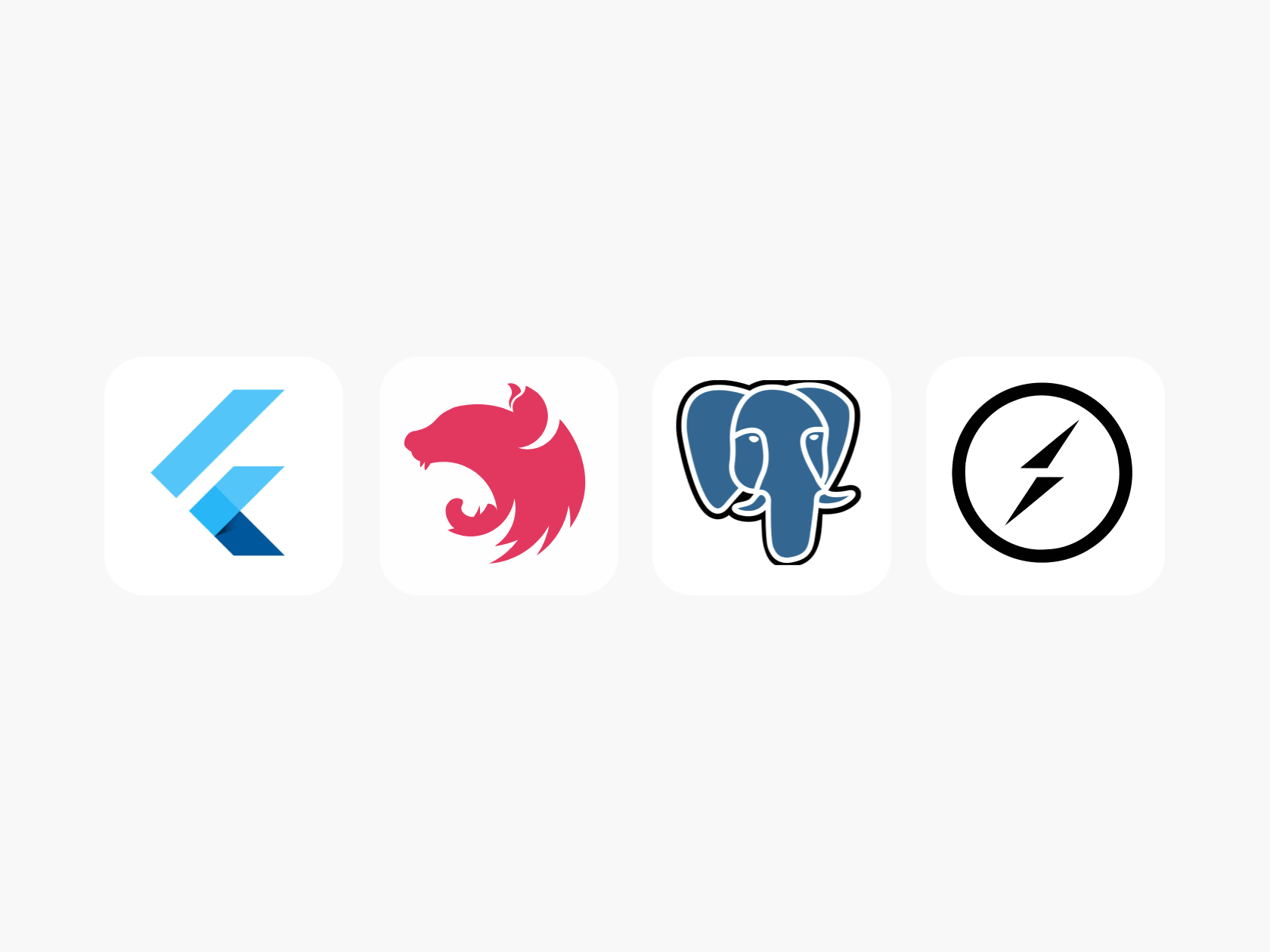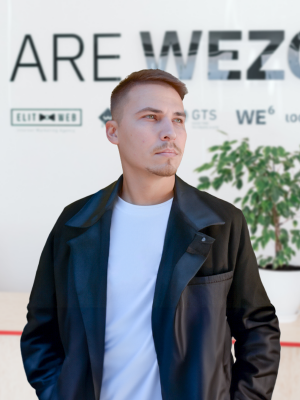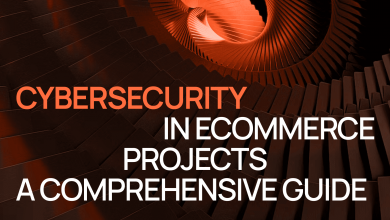Online messengers have been a part of our lives for a long time. No wonder today the majority of mobile apps are offering some functionality that includes text chats – for professional use, online commerce, entertainment, or dating.
How do you ensure maximum speed, convenience, and safety of online communication for users in the mobile format? Our team covered these needs and solved all the occurring issues by creating our own chat microservice, so let's take a closer look at this solution. We will discuss how to develop chat for a mobile application from scratch.
Why Should You Create Your Own Chat In a Mobile App?
This is a reasonable question as on the software market, there are ready-made modules that allow to realize the chat functionality. But the problem is that almost none of the solutions that are available is able to fully satisfy our client’s demands.
Here are some of the main difficulties:
- Ready-made solutions do not allow to creation of a truly unique design.
- Another substantial disadvantage of ready-made chat modules is the fact that possibility of scaling and the further development of the product.
- In the long-term perspective, using ready-made chat modules becomes extra expensive.
Thus, by encountering several requests for mobile app creation in our own practice, we understood that the best solution to this problem would be to create an individual chat for the mobile app. In this model, a client pays for just once, when the project has started, avoiding the burden of further costs for subscription or traffic.
At the same time, the client receives a custom solution which is adjusted to all of the requirements of the business, and can grow it the way he wants. Technically, such a solution can also be realized in a form of a microservice that is inbuilt in the application.
Where can you use such a solution? Almost anywhere. eCommerce solutions, various online services, dating platforms, online learning platforms, corporate CRMs, ERPs and applications – all these products require a reliable, convenient, and safe functionality of an online chat.
What Key Functions Do You Need in a Chat for a Mobile Application?
To fit into the standards of user experience and be ahead of the equivalents on the market, the individual chat available in the mobile application should have enabled the whole set of typical functionality and the possibility of its further growth.

Sending and Receiving Messages in Real Time
The mechanism of message exchange should work immediately as today it is one of the key requirements for quality user experience in messengers. The minimum requirements for the hat we had to create included enabling a seamless exchange of photo and text content without delays and with minimum traffic usage.
Dynamic Loading of Messages
A modern mobile chat requires the possibility of the emergence of new messages in the window without the need to reload the page – so that the users are not interrupted in the process of messaging and maximum interactiveness is ensured. The realization of dynamic updating requires the usage of a special protocol for the exchange of data between the client and the server.
Indication of the Online and Offline Statuses of a User
The possibility of indicating the presence of the user in the network in the real-time mode is vital for enabling quality communication in the app and providing the highest quality customer experience possible.
This possibility is equally useful for statistics and the analysis of the behavior of the audience. It is vital to provide users with complete control over the indication of their presence online. For example to give them the possibility to stay invisible.

The Counter of Unread Messages
This is another feature that already seems quite familiar to all the users. It is important to make the indicator of unread messages in the chat of the mobile application flexible and customizable so that users can choose the notification format that is convenient for them - either in push format or in the format of a passive counter.
Of course, this is more of a necessary minimum than an exhaustive list of functions. Over time, the functionality of the solution can be developed and enriched. For example, you can add the ability to exchange voice and video messages, create group channels, etc. to the chat.
Stages of Creating a Chat for a Mobile Application
Creating a chat for a mobile application is a complex and multi-stage process. Let's explore the essential steps involved, from initial design to technical implementation, to bring this vital communication feature to life.
Designing
The creation of such a system required the close interaction of backend, frontend, and mobile specialists. Therefore, in the first stage, the developers studied the technical requirements, defined the architecture and logic of the new solution, and chose the appropriate technologies for the implementation of the project.
The result of the design was a detailed concept of the product - it was conceived as a microservice on Node.JS, with which you can implement the chat functionality in any application. In addition, this solution will not require integration with external services and APIs to work.
Creating the UI/UX Design
Meanwhile, UI/UX specialists worked on user and visual solutions for the new system. They worked out the design according to Nielson Norman standards and the IBM design-thinking methodology, and used the User Story Mapping method.
The user experience and visuals of a custom chat should be fine-tuned, but at the same time should be implemented according to Google and Apple design standards. After all, applications with chats are usually published in the App Store and Play Market. Designers took this into account when creating and coordinating system interface layouts.

Product Layout
Once the technical concept and design mockups were approved, the front-end developers were able to implement the product pages and screens at the programmatic level. This process involved using web and mobile development technologies to create the app's interactive user interfaces, chat elements, and admin panel.
The experience of using the product directly depends on the high-quality layout: the correctness of the display and operation of the interface elements, speed of operation, etc. In addition, a high-quality application is much easier to publish in stores the first time.
Technical Implementation of the Server Part
At the same time, developers on the backend implement all the functionality of the chat: microservice architecture development, database organization, etc. This phase generally involves writing, testing, and debugging the code that will be executed on the backend.
In this phase, the client part of the microservice was integrated with server nodes, sockets, etc. Thus, the logic of the service was completed and prepared for work.
All these stages of creating a chat for a mobile application sometimes unfolded in parallel. In general, the development process was three-way. Part of the project was created on a mobile phone (visual, communication, sending and receiving data). Data processing was performed through a microservice on Node.js/NestJS, which required the participation of the frontend. File storage and consolidation were developed on the backend side.

How to Ensure the Security of Chat Data Storage
How to ensure an appropriate level of data protection and confidentiality of correspondence? We address this issue in three areas: security practices, quality control, and data storage approaches.
Security and Privacy
It is important to provide protection mechanisms in the mobile chat against spam, bots, ransomware attacks, and the sending of any malicious messages. Ideally, the user account should be protected by two-factor authentication and biometrics.
In our microservice architecture, we provided an additional level of security, with token authorization. This means that the user is authorized not only in the application itself but also in the chat, with a separate request to the backend. Without verifying the request on the server side, it is impossible to access the chat.
Testing
The question of quality control is crucial both from the point of view of the stability of the product's operation and from the point of view of its cyber security. So we tested our microservice in several ways:
- unit testing, or checking the correctness of each individual functional module, process, or element of the source code of the product in order to avoid the accumulation of errors and regression of already configured modules.
- manual testing, or "manual" search for bugs, which is carried out without the use of software and automation tools. The tester simulates product usage scenarios, trying to capture all of its functionality.
- automated UI testing, or interface testing using automation tools, such as scripts. Automated testing cannot completely replace manual testing by a specialist, but it can effectively supplement it.
Pen-testing of the product is also a great practice – a check in which experts simulate the actions of attackers and look for vulnerabilities in the system. We recently conducted similar pen-testing on the platform of one of our clients.
Data Storage
The modern standard for data security on the backend is encryption mechanisms. In addition, end-to-end message encryption is used, where messages are encrypted directly on the sender's device and decrypted on the recipient's device. So attackers cannot simply intercept messages in correspondence or steal them from the server.
In our development practice, we strive to provide customers with maximum flexibility in the matter of data storage and management - so that they can choose between their own servers, cloud technologies, and reliable hosting that they trust 100%. This is the best way to make sure that your app's customer metadata (phone numbers, IP addresses, etc.) doesn't fall into the wrong hands. In addition, as practice shows, a separate on-premise infrastructure for data storage is a very inconvenient target for hackers.
The Technology Stack and the Necessary Team of Specialists
To develop our microservice, we used several frameworks and libraries for mobile development:
- Flutter is a cross-platform development framework based on the Dart language. It successfully combines the capabilities of JIT and AOT compilation and also provides developers with Hot Reload capabilities to simplify work on the application. We used Flutter on the mobile side.
- NestJS is a framework for creating server-side applications on Node.js, using JavaScript and TypeScript, which allows you to implement a microservice architecture. We applied it to process the data coming into the application.
- PostgreSQL is a powerful object-relational database management system that offers many development, data management, and security tools. We have implemented this platform to store chat data on the server.
- Socket.io is a JS library for real-time data exchange, which allows you to choose the best connection options between the client and the server, with minimal latency. We used this library to build instant messaging.

What specialists are needed for this type of project?
A small but qualified team is enough to create such a product.
- a backend developer – a specialist who can implement the server part of a microservice from scratch. In our case, this is a developer who knows PostgreSQL and GraphQL well.
- a frontend developer – a developer of the client part of the chat, who can build its interaction with the server. In this project, the frontend specialist worked with NestJS tools to set up data processing and exchange with the backend.
- a mobile developer - since you need to build a messaging app with a chat, a mobile development specialist is needed who can integrate the new microservice into the product for the end user. In our case, this is a Flutter developer who creates cross-platform applications.
It is important that the team has experience in developing real projects for business and understands the development trends of this market. Without it, it will be difficult to make the most effective product architecture decisions.
WEZOM Can Develop a Customized Chat for Your Application
Our team has more than 20 years of experience in developing digital products for businesses. In the 2000s, these were elementary websites, and today – complex software for business management, as well as web and mobile applications of any complexity. WEZOM specialists have dozens of successful cases in the digitalization of logistics, production, energy industry, eCommerce, etc.
The ability to create a chat for a mobile application can be useful in almost any industry that requires communication between people. One of the first projects where we applied the new custom module of such a chat was the dating application LINQ - we will talk about it very soon when the project reaches the release. If you are interested in similar technologies for your own application, leave a request for a consultation with our experts right now.
Let's sum up
It is worth emphasizing that our solution will not compete with traditional messengers such as Telegram and Viber. It is a microservice that can be embedded in any application and customized as you like: with deep customization of design and functions. Such chats may look completely different, but "under the hood" they will be based on a proven architecture.
We are convinced that individual chat app development has absolute advantages compared to ready-made modules from vendors: flexibility, scalability, security, cost efficiency, and full customization to business needs. It can be used anywhere: in eCommerce, in online services, in dating applications, in mobile versions of corporate platforms, etc. In a world where more than 4 billion people use smartphones, such tools cannot be ignored.


